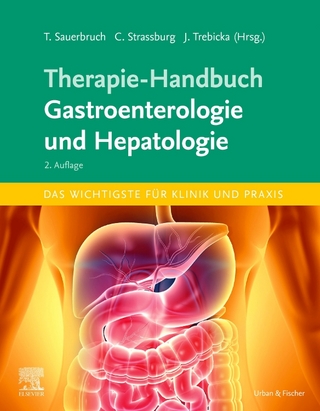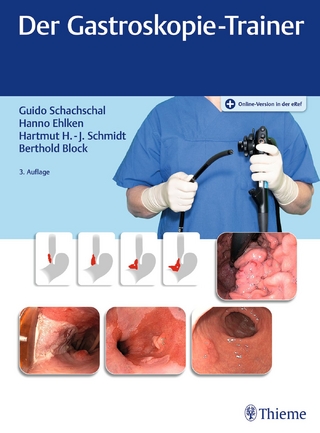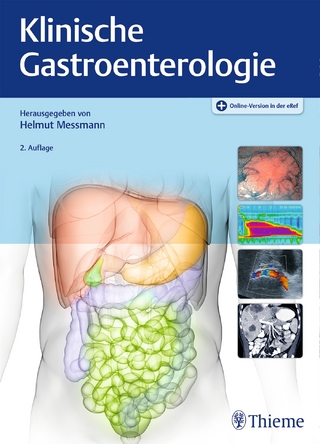
Biomechanics of the Human Stomach
Springer International Publishing (Verlag)
978-3-319-86677-2 (ISBN)
This book concerns the mathematical modeling and computer simulation of the human stomach. It follows the four modern P's (prevention, prediction, personalization, and precision in medicine) approach in addressing the highly heterogeneous nature of processes underlying gastric motility disorders manifested as gastroparesis, functional dyspepsia, myenteric enteropathy etc. The book comprehensively guides readers through the fundamental theoretical concepts to complex physiological models of the organ. This requires a deep and thorough understanding of driving pathophysiological mechanisms as well as the collaborative effort of specialists working in fundamental and biological science. Such a multidisciplinary partnership is vital because it upholds gnostic capabilities and provides the exchange of thoughts and ideas thus offering broad perspectives into the evolution and management of diseases. The book is a valuable resource for applied mathematicians, computational biologists, bioengineers, physicians, physiologists and researchers working in various fields of biomedicine.
Professor Dr. Roustem Miftahof, MD, PhD, DSc is the Chair of Computational Biology and Medicine Centre in the College of Medicine and Medical Sciences at Arabian Gulf University in Manama, Bahrain. He earned the Doctor of Medicine degree with Honors in 1980 and the degree in Applied Mathematics with Honors in 1981. His PhD in Mathematical and Physical Sciences was related to Numerical simulation of stress-strain distribution in the human stomach and his DSc in Technical Sciences (post-habilitation dissertation) was on Peristaltic waves in biological shells.
Preface.- Notations.- Abbreviations.- Introduction.- Chapter 1. Biological Preliminaries.- Chapter 2. Biomechanics of the Human Stomach.- Chapter 3. Geometry of the Surface.- Chapter 4. Parameterization of Shells of Complex Geometry.- Chapter 5. Nonlinear Theory of Thin Shells.- Chapter 6. Continuum Model of the Biological Tissue.- Chapter 7. Boundary Conditions.- Chapter 8. Soft Shells.- Chapter 9. The Intrinsic Regulatory Pathways.- Chapter 10. The synapse.- Chapter 11. Multiple co-transmission and receptor polymodality.- Chapter 12. A Model of Gastric Smooth Muscle.- Chapter 13. Human Stomach as a Soft Biological Shell.- Chapter 14. Pharmacology of Gastric Contractility.- Chapter 15. Biomechanics of the Human Stomach after Surgery.- Chapter 16. Biomechanics of the Human Stomach in Perspective Addendum.- Chapter 17. Existence of solutions.- Chapter 18. Dynamics of waves in solid deformable structures.- References.- Index.
"If you are a researcher seeking to develop or apply a computational model of the human stomach, this book would certainly make a great first (or second) point of reference." (Anita T. Layton, SIAM Review, Vol. 61 (1), March, 2019)
“If you are a researcher seeking to develop or apply a computational model of the human stomach, this book would certainly make a great first (or second) point of reference.” (Anita T. Layton, SIAM Review, Vol. 61 (1), March, 2019)
| Erscheint lt. Verlag | 11.8.2018 |
|---|---|
| Zusatzinfo | XXII, 279 p. 95 illus., 29 illus. in color. |
| Verlagsort | Cham |
| Sprache | englisch |
| Maße | 155 x 235 mm |
| Gewicht | 468 g |
| Themenwelt | Medizinische Fachgebiete ► Innere Medizin ► Gastroenterologie |
| Studium ► 1. Studienabschnitt (Vorklinik) ► Physiologie | |
| Naturwissenschaften ► Biologie | |
| Schlagworte | Biomechanics • Computer simulations • Gastrointestinal Physiology • Human stomach • Mathematical Modeling |
| ISBN-10 | 3-319-86677-X / 331986677X |
| ISBN-13 | 978-3-319-86677-2 / 9783319866772 |
| Zustand | Neuware |
| Haben Sie eine Frage zum Produkt? |
aus dem Bereich


